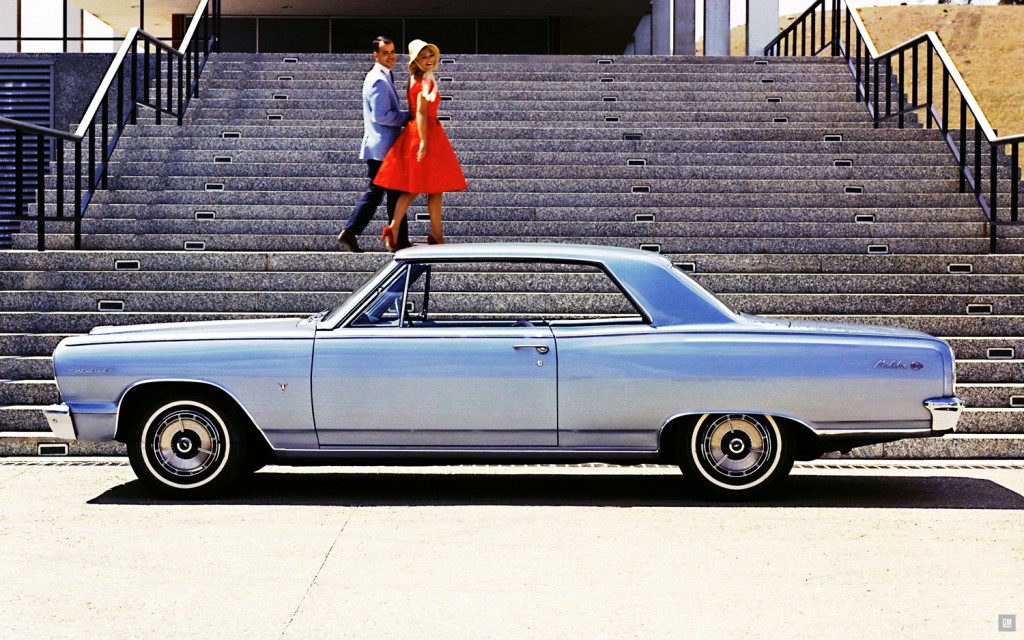Fifty years ago the Chevelle debuted for the 1964 model year and the Malibu version was launched simultaneously as the top trim line for the Chevelle.
The first three variants of the Malibu were built on GM’s A-body platform, notable for the use of a perimeter frame and coil-spring suspension, at a time when many other midsize domestic cars were beginning to employ unitized structures. The Malibu used body-on-frame construction and in the beginning was powered by a 3.2-liter inline-six cylinder that made just 120 horsepower when hooked up to a three-speed manual gearbox. The Malibu would change a bit over time, growing in size at first and later becoming smaller in the late 1970s. In 1983 it disappeared from the Chevrolet lineup altogether, and it wasn’t until 1997 that the Malibu name would appear again. In its prime, a selection of six body styles and six engines (two straight-sixes and four V-8s) spread over three models (Chevelle 300, Chevelle Malibu, and Chevelle Malibu SS), gave the Chevelle line what it needed to appeal to a wide range of customer tastes.
The first-year 1964 Chevelle was aimed at performance enthusiasts with its premium engine option being a four-barrel 327-cu.in. V-8 that delivered 300 horsepower. When Pontiac introduced the 348hp, 389-powered GTO in mid-1964, a performance contest was started and Chevrolet responded with the 375hp SS 396 in 1965. The SS 396 would go on to become a best seller and a few years later it became the basis of the powerful Chevelle SS 454 that was produced from 1970 to 1973.
During the Chevelle’s 13-year run, it went through two major redesigns, the first in 1968 and another in 1973 with the Colonnade body style. Chevrolet sold an astounding 5 million Chevelles in total before the nameplate was eventually phased out, although a downsized Malibu soldiered on until 1983. Chevy’s success with millions of Chevelles and Malibu’s over the years has enabled those cars to become indisputable icons in the collector car hobby. Both models are still loved and well represented today and it’s a rare car show, cruise-in, or collector car meet that doesn’t have at least a few on prominent display. This year marks a well-deserved and happy 50th birthday for what may be the favorite GM classics of all time!

